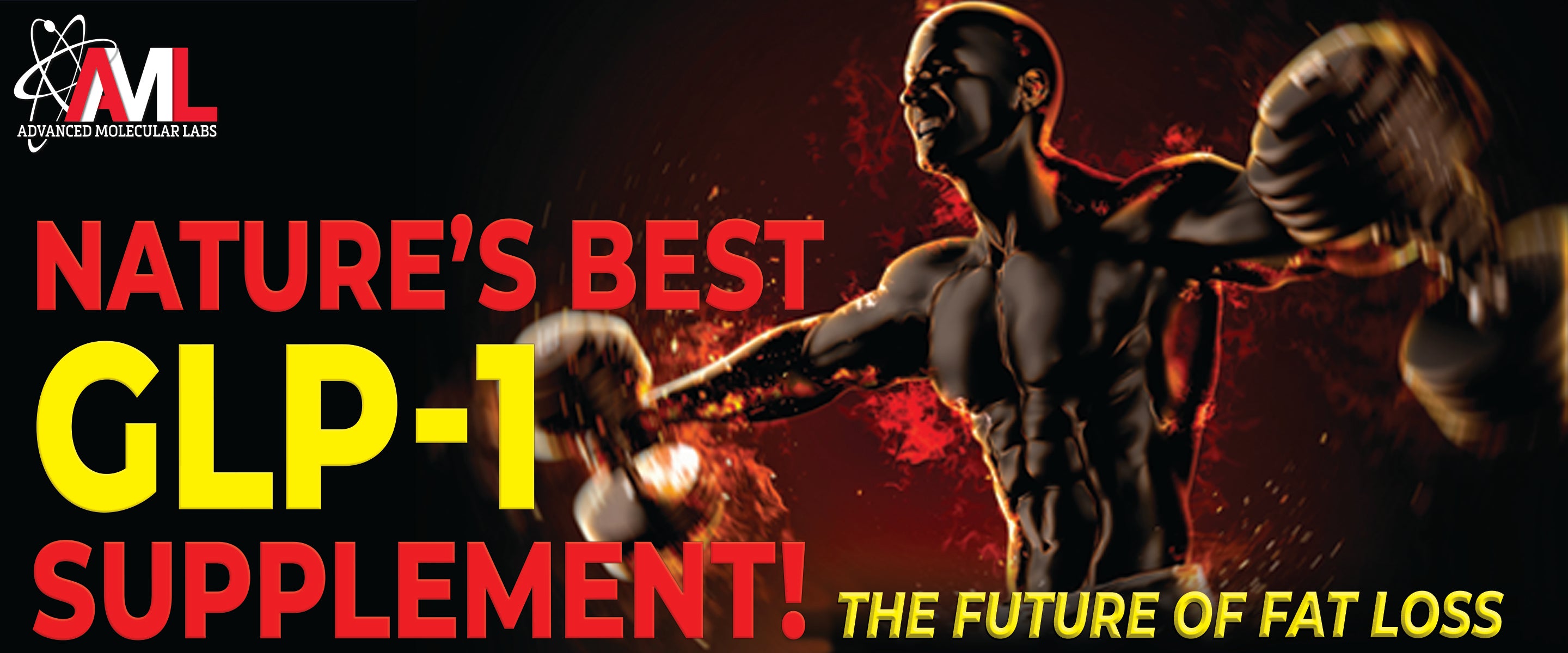


BATTLING ADDICTION. DOPA RUSH COCKTAIL: The Natural Alternative
By Steve Blechman
Dopamine is a fascinating chemical.
It impacts reward, motivation, motor control, mood, and decision making.
It’s even been shown to affect athletic performance.[1]
Specifically, elevated dopamine concentrations in the brain help drive athletes toward action and exertion. It also helps them to decide not to “give up”, especially in light of challenging circumstances.[1]
A wide array of activities can stimulate a flood of dopamine in the body, including exercise, listening to music, and sex.
Taking drugs (especially psychostimulants like cocaine and/or amphetamines) is also known to induce floods of dopamine.
The problem is that taking these drugs leads to addiction, and this addiction is heavily related to dopamine.
Specifically, elevated levels of dopamine in the dorsal striatum are involved in the motivation to obtain the drug when an addicted person is exposed to stimuli associated with the drug.[2]
Additionally, the faster and larger the increase in dopamine resulting from the use of a particular drug, the more addictive it is.[2]
Two of the most commonly abused psychostimulants are cocaine and amphetamines.
In fact, cocaine use disorder and an amphetamine-type use disorder are among the most prevalent drug-related conditions around the world having increased globally at 39.7% and 22.5%, respectively, from 1990 to 2016.[3]
Long-term drug use is associated with reduced dopamine function, by way of decreased D2 dopamine receptors in the striatum, and these receptor reductions are also associated with lower activity of the orbitofrontal cortex (region involved with salience attribution, motivation, and compulsive behaviors).[2]
Presently, the most commonly practice for dealing with substance abuse disorders involves treatment with agonist-like medications, an approach known as replacement or substitution therapy.[3]
An “agonist” medication should possess similar pharmacologic and behavioral effects as the drug of abuse, providing relief of craving and other symptoms of acute and protracted withdrawal. It also bears mentioning that cravings and symptoms of withdrawal are two main factors responsible that contribute to relapse following periods of abstinence.
Additionally, compounds considered for use as agonist medication should:
- Possess few acute side effects
- Have no behavioral organ toxicity in clinically used doses
- Be acceptable for chronic administration
Researchers also stipulate that “effective treatment” with agonist medication should support initial abstinence (from the addictive substance -- cocaine, amphetamine, etc) with improved adherence to treatment. This last point is especially important as high dropout rates are one of the primary challenges in working with this individuals battling substance use disorders.[3]
A common feature of all stimulants is that they acutely increase dopamine and noradrenaline levels in the brain, inducing feelings of stimulation and euphoria. Chronic use of these compounds can result in long-lasting changes to the brain’s wiring.
Two of the most common medications used by researchers are the prescription psychostimulants, such as amphetamine salts (for example, Adderall) or methylphenidate. Both of these are accepted for medical use and have a favorable safety profile.[4,5]
However, caution should be exercised with these prescription psychostimulants as they pose a risk of misuse and diversion, according to researchers.[3]
One glaring example of how prescription psychostimulants like Adderall are misused routinely occurs on college campuses each semester as the pills are sold between students who have a prescription for the medication to those students preparing for finals.
And, as is the case with all pharmaceuticals, prescription psychostimulants are not without their own set of side effects.
Now, make no mistake, recent studies have shown that prescription psychostimulants can and do promote reduced usage and sustained abstinence for individuals with cocaine and opioid use disorders.[3]
However, these same individuals are still beholden to another set of pharmaceuticals that help wean them off the toxic drugs, but still have them using a replacement medication long-term.
Rather than be forced to rely on prescription stimulants, why not seek out a lifestyle that naturally boosts dopamine, helps treat addiction, and support long-term health and wellness.
How to Boost Dopamine Naturally
This probably won’t shock many of you, but the best way to naturally increase dopamine (and subsequently improve mood and feelings of well-being) is through diet and exercise.
Becoming “addicted” to a healthy lifestyle, and there is no need to become dependent on toxic stimulants like amphetamines and other prescription psychostimulants.
Exercise
The body craves (and thrives when exposed to) regular bouts of physical activity.
Research indicates that exercise boosts dopamine production, increases the production of new brain cells, and slows down brain cell aging.[6,10] It’s also known to improve mood and overall outlook on life.
Animal studies indicate that regular aerobic exercise (one hour on a treadmill, five times a week) can decrease stress-induced cocaine-seeking behavior while positively altering behavioral and physiological responses to stress.[7]
Lead researcher on the landmark study, Dr. Thanos, has stated:
“Our results suggest that regular aerobic exercise could be a useful strategy for relapse prevention, as part of a comprehensive treatment program for recovering cocaine abusers.”[8]
Thanos also notes that exercise alters the brain’s mesolimbic dopamine pathway, which is associated with the rewarding and reinforcing properties of drugs such as cocaine.
Moreover, exercise is known to reduce stress hormones and boost mood, which may help in reducing anxiety and negative emotions associated with withdrawal.
Exercise also helps people quit smoking, too!
Other studies conducted in women find that vigorous exercise may also help quit another addictive (and harmful) habit -- smoking.[9]
As you likely know, nicotine is a stimulant that fires up the CNS and is also addicting. While not as toxic or harmful as other stimulants (cocaine), the delivery form in which nicotine is most widely consumed (cigarettes) are a known carcinogen and toxic.
Diet
What you eat also has a direct impact on dopamine levels.
Certain foods are rich in the amino acids tyrosine and phenylalanine, which the body uses to produce dopamine.
Both tyrosine and phenylalanine are naturally found in eggs, dairy, beef, turkey, and legumes.[11]
Research also notes that increasing the amount of tyrosine and phenylalanine in the diet can boost dopamine levels in the brain.[12,13]
On the flip side, research also shows that diets low in tyrosine and phenylalanine depletes dopamine levels.[14]
Enjoy Nature
Seasonal affective disorder (SAD) is a condition in which people experience negative feelings and bouts of poor mood due to lack of sunshine.
The reason for this is that sun exposure concentrations of mood-boosting neurotransmitters, including dopamine.[15]
Human studies have found that individuals who receive higher amounts of exposure to sunlight also have the greatest density of dopamine receptors in the movement and reward regions of the brain.[16]
Research even notes that as little as 20 minutes of experiencing nature (i.e. going for a walk in the park or woods) can significantly reduce cortisol (stress) levels, which also helps improve mood.[17]
Supplements
In addition to living a healthy lifestyle (proper diet and exercise), supplements can help boost dopamine levels. As an added bonus, they don’t come with the addiction or withdrawal commensurate with long-term prescription drug use.
The body requires several key nutrients in order to produce dopamine, including vitamin B12, folate, L-Dopa, and tyrosine.
These same ingredients can be found in AML DopaRush Cocktail.
AML DopaRush Cocktail as part of a healthy diet and exercise program is a safer alternative than amphetamines for raising dopamine levels. It contains no banned substances or harsh stimulants -- just premium-quality, research-backed nutrients to support the body’s natural dopamine production.
Dopa Rush Cocktail is the solution for a tired, frazzled nervous system by providing effectively-dosed nutrients that support the dopamine production mechanisms in the body.
It is a safe, natural and non-habit forming way to naturally increase dopamine levels to help increase energy, productivity, alertness, motivation, and mood.
References
- Roelands, B., Hasegawa, H., Watson, P., Piacentini, M. F., Buyse, L., De Schutter, G., et al. (2008). The effects of acute dopamine reuptake inhibition on performance. Med. Sci. Sports Exerc. 40, 879–885. doi: 10.1249/MSS.0b013e3181659c4d
- Volkow ND, Fowler JS, Wang G, Swanson JM, Telang F. Dopamine in Drug Abuse and Addiction: Results of Imaging Studies and Treatment Implications. Arch Neurol. 2007;64(11):1575–1579. doi:10.1001/archneur.64.11.1575
- Tardelli, V.S., Bisaga, A., Arcadepani, F.B. et al. Prescription psychostimulants for the treatment of stimulant use disorder: a systematic review and meta-analysis. Psychopharmacology 237, 2233–2255 (2020). https://doi.org/10.1007/s00213-020-05563-3
- Goldstein RZ, Woicik PA, Maloney T, Tomasi D, Alia-Klein N, Shan J, Honorio J, Samaras D, Wang R, Telang F, Wang GJ, Volkow ND (2010) Oral methylphenidate normalizes cingulate activity in cocaine addiction during a salient cognitive task. Proc Natl Acad Sci U S A 107:16667–16672
- Goldstein RZ, Volkow ND (2011) Oral methylphenidate normalizes cingulate activity and decreases impulsivity in cocaine addiction during an emotionally salient cognitive task. Neuropsychopharmacology 36:366–367
- Sutoo D, Akiyama K. Regulation of brain function by exercise. Neurobiol Dis. 2003;13(1):1-14. doi:10.1016/s0969-9961(03)00030-5
- Lisa S. Robison, Luke Alessi, Panayotis K. Thanos. Chronic forced exercise inhibits stress-induced reinstatement of cocaine conditioned place preference. Behavioural Brain Research, 2018; 353: 176 DOI:1016/j.bbr.2018.07.009
- University at Buffalo. "Exercise can help beat cocaine addiction, study finds." ScienceDaily. ScienceDaily, 9 August 2018. <sciencedaily.com/releases/2018/08/180809093520.htm>
- Marcus BH, Albrecht AE, King TK, et al. The Efficacy of Exercise as an Aid for Smoking Cessation in Women: A Randomized Controlled Trial. Arch Intern Med. 1999;159(11):1229–1234. doi:10.1001/archinte.159.11.1229
- Lin TW, Kuo YM. Exercise benefits brain function: the monoamine connection. Brain Sci. 2013;3(1):39-53. Published 2013 Jan 11. doi:10.3390/brainsci3010039
- S. Department of Agriculture, Agricultural Research Service. FoodData Central, 2019.
- Fernstrom JD, Fernstrom MH. Tyrosine, phenylalanine, and catecholamine synthesis and function in the brain. J Nutr. 2007;137(6 Suppl 1):1539S-1548S. doi:10.1093/jn/137.6.1539S
- Colzato LS, de Haan AM, Hommel B. Food for creativity: tyrosine promotes deep thinking. Psychol Res. 2015;79(5):709-714. doi:10.1007/s00426-014-0610-4
- Montgomery AJ, McTavish SF, Cowen PJ, Grasby PM. Reduction of brain dopamine concentration with dietary tyrosine plus phenylalanine depletion: an [11C]raclopride PET study. Am J Psychiatry. 2003;160(10):1887-1889. doi:10.1176/appi.ajp.160.10.1887
- Neumeister A, Konstantinidis A, Praschak-Rieder N, et al. Monoaminergic function in the pathogenesis of seasonal affective disorder. Int J Neuropsychopharmacol. 2001;4(4):409-420. doi:10.1017/S1461145701002644
- Tsai HY, Chen KC, Yang YK, et al. Sunshine-exposure variation of human striatal dopamine D(2)/D(3) receptor availability in healthy volunteers. Prog Neuropsychopharmacol Biol Psychiatry. 2011;35(1):107-110. doi:10.1016/j.pnpbp.2010.09.014
- Mary Carol R. Hunter, Brenda W. Gillespie, Sophie Yu-Pu Chen. Urban Nature Experiences Reduce Stress in the Context of Daily Life Based on Salivary Biomarkers. Frontiers in Psychology, 2019; 10 DOI: 3389/fpsyg.2019.00722





